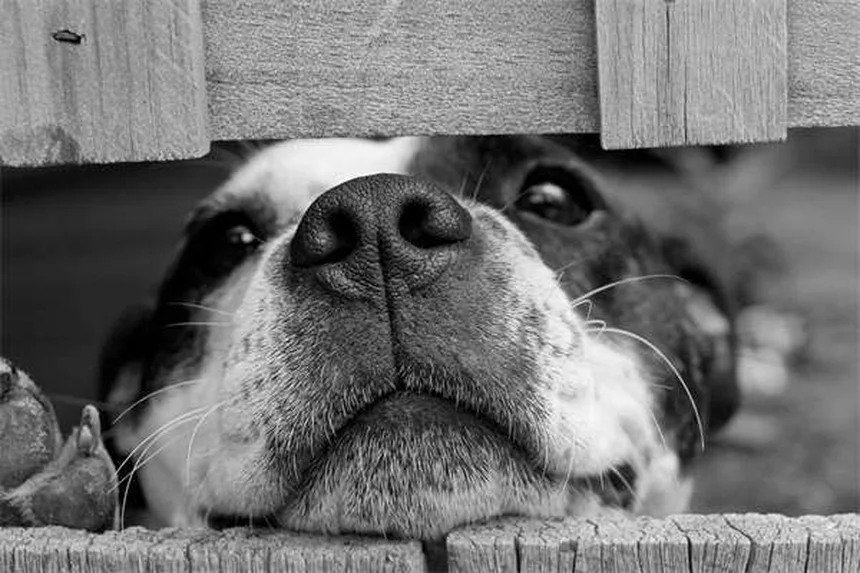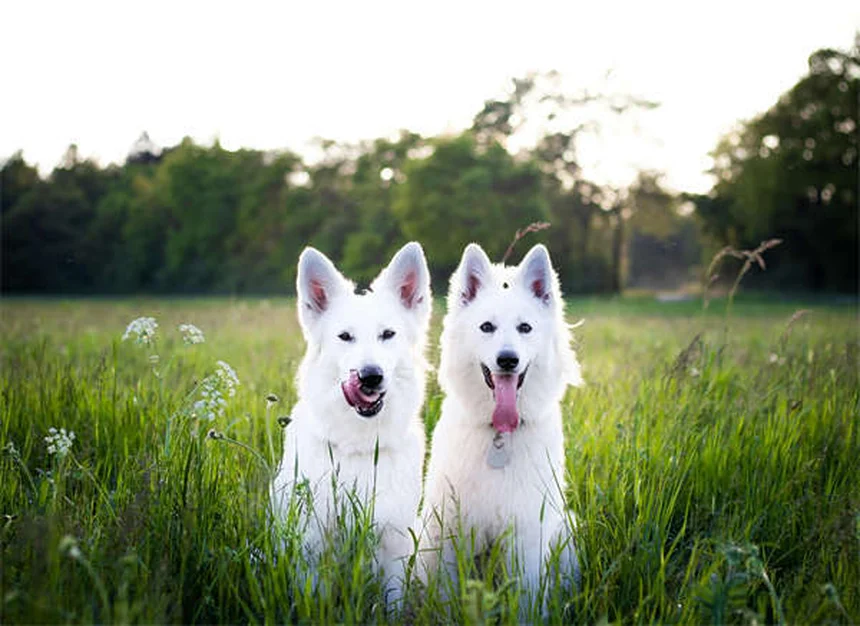Advertisement
Are you making these common pet bathing mistakes that stress out your furry friend? The answer is: you probably are without even realizing it! As a pet owner myself, I've learned that bath time doesn't have to be a nightmare - but only if you avoid these critical errors.Most of us think we're being gentle, but from your pet's perspective, you might as well be waterboarding them! Between the wrong water temperature, using human shampoo, and that tense body language you don't realize you're projecting, we're often creating the very stress we're trying to avoid.The good news? With a few simple changes, you can transform bath time from a battle into bonding time. I've helped dozens of pet parents turn their trembling pups into dogs who actually look forward to getting clean. Stick with me and I'll show you exactly how to make your next pet bath session smoother than ever!
E.g. :Why Do Dogs Stare at You? 5 Surprising Reasons Explained
- 1、Bath Time Blues: Why Pets Hate It So Much
- 2、The 7 Deadly Sins of Pet Bathing
- 3、Creating Positive Bath Experiences
- 4、Equipment Essentials vs. Marketing Hype
- 5、Frequency: How Often is Too Often?
- 6、Special Cases That Break the Rules
- 7、When to Call in the Professionals
- 8、The Science Behind Pet Grooming Needs
- 9、Alternative Cleaning Methods
- 10、Breed-Specific Grooming Secrets
- 11、The Psychology of Positive Reinforcement
- 12、Common Household Hazards
- 13、Grooming as Bonding Time
- 14、FAQs
Bath Time Blues: Why Pets Hate It So Much
The Sensory Overload Problem
Ever wonder why your dog shakes like a leaf when you bring out the shampoo? It's not just about the water - it's everything hitting their senses at once. The sound of running water, the slippery tub floor, that weird floral scent from your fancy shampoo... it's like throwing someone into a surprise alien abduction!
Here's what's really happening: Dogs have hearing 4 times more sensitive than humans, so that showerhead sounds like Niagara Falls to them. Cats? Their fur takes hours to dry naturally, making them feel vulnerable. We're basically waterboarding our pets without realizing it!
Making It Worse Without Meaning To
You know that "calm voice" you use saying "It's okay, buddy!" while wrestling them into the tub? Yeah... they don't buy it. Your tense shoulders and that death grip on the leash tell the real story. Animals read body language better than any therapist!
Pro tip: Try this instead - play with the water at their paws first while giving treats. Make it a game before it becomes a chore. I've seen dogs go from trembling to tail-wagging just by introducing water slowly with positive reinforcement.
The 7 Deadly Sins of Pet Bathing
 Photos provided by pixabay
Photos provided by pixabay
Mistake #1: Wrong Water Temperature
Would you jump into a freezing cold shower? Neither will your pet! But here's something most owners don't realize - water that feels warm to your wrist can scald delicate pet skin.
Ideal pet bath temperatures:
| Pet Type | Safe Temperature Range |
|---|---|
| Dogs | 98-102°F (like their body temp) |
| Cats | 100-103°F (slightly warmer) |
| Small Pets | 95-98°F (more sensitive skin) |
Here's a trick I use: test the water on your inner elbow where skin is thinner, like a baby's bottle. If it feels hot there, it's definitely too hot for Fido!
Mistake #2: Using Human Shampoo
"But it's organic lavender!" Doesn't matter. Human shampoo strips the protective oils from pet skin, leading to irritation and... wait for it... more baths as they scratch themselves raw!
Pet shampoos are pH balanced specifically for animal skin (around 7.0 for dogs vs 5.5 for humans). That fancy $30 salon shampoo you love? It's basically acid rain on your pup's skin. Ouch!
Creating Positive Bath Experiences
Transforming Dread into Play
Remember your first swimming lesson? Probably terrifying until someone made it fun. Same principle applies! Start by just letting your pet explore the dry tub with treats. Then add an inch of water with toys. Build up slowly over weeks.
My neighbor's golden retriever now jumps into the tub on command because they turned bath time into "Find the Hot Dogs" - scattering pieces in the water for him to retrieve. Genius!
 Photos provided by pixabay
Photos provided by pixabay
Mistake #1: Wrong Water Temperature
What happens after the bath matters just as much. If the only thing waiting is nail trimming or ear cleaning, no wonder they run! Instead, make it the best part of their week.
In my house? Bath = Spa Day. Warm towel rubdowns, special chew toys only available after bathing, and cuddle time. Now my labrador comes running when he hears the water - he knows the royal treatment is coming!
Equipment Essentials vs. Marketing Hype
What You Actually Need
Pet stores sell everything from "paw protectant creams" to "ear drying helmets." Here's the truth: you need exactly three things:
1. A rubber mat (safety first!)
2. pH-balanced shampoo (vet-approved)
3. Lots of treats (the stinkier the better)
That $40 "professional pet bathing apron with treat pockets"? Cute, but your old t-shirt works fine. Save that money for extra bully sticks - way better investment!
When to Splurge
The one upgrade worth considering? A handheld showerhead with adjustable pressure. Trying to rinse a husky with a cup is like bailing out the Titanic with a teaspoon! I got mine for $25 and it cut bath time in half.
But here's the funny part - the fancy one with 12 spray patterns collects dust. The basic model with "gentle" and "rinse" settings gets all the use. Pets prefer simplicity!
Frequency: How Often is Too Often?
 Photos provided by pixabay
Photos provided by pixabay
Mistake #1: Wrong Water Temperature
Not too much, not too little... but how do you know? Here's a dirty little secret: most of us bathe pets way more than needed. Unless they rolled in something disgusting, monthly is plenty for most breeds.
Wait, you're bathing your poodle weekly? You might be causing dry skin issues that... surprise! Make them smell worse as their skin overproduces oils to compensate. It's a vicious cycle!
Signs You're Overdoing It
Scratching more after baths? Dandruff? That "wet dog smell" lingering for days? These are cries for help from their skin microbiome! Ease up and you'll both be happier.
My rule of thumb: if your dog's coat feels like straw instead of silk, you've crossed the line. When in doubt, ask your vet - they'll give you the straight scoop without trying to sell you expensive "coat repair" products!
Special Cases That Break the Rules
Puppies and Kittens
Think human babies need frequent baths? Nope - and neither do young animals! Their skin is even more delicate. For puppies under 6 months, I recommend spot cleaning with warm washcloths unless they're truly filthy.
Fun fact: kittens often learn bathing habits from mom. If yours was separated early, they might need extra patience. Start with just wiping paws and work up slowly - no full immersion until they're comfortable!
Senior Pets
Arthritis changes everything. That high-sided tub you've always used? Might as well be Mount Everest to your 12-year-old lab. Consider:
- Walk-in showers with non-slip mats
- Portable pet tubs at waist height
- Waterless shampoos between baths
I helped my grandma's ancient pug by putting a foam step stool in her walk-in shower. Life-changing! Now bath time doesn't leave him sore for days.
When to Call in the Professionals
The "I've Tried Everything" Scenario
Some pets have genuine trauma around water (rescue dogs with unknown histories, for example). If after months of patience your pet still panics, it's okay to get help!
Mobile groomers often have magic tricks up their sleeves - special restraint techniques, ultra-quiet dryers, the whole nine yards. Worth every penny for everyone's sanity!
Medical Considerations
Certain conditions require pro care: severe skin infections, post-surgical needs, or aggressive pets who might bite. Never feel bad about outsourcing these baths - it's safer for everyone involved.
My vet's office offers "medical baths" for dogs with chronic skin issues. The techs know exactly which medicated shampoos to use and for how long. Sometimes DIY isn't the right answer!
The Science Behind Pet Grooming Needs
Understanding Natural Oils and Coat Health
You know that shiny coat you love to pet? It's not just for looks - it's a complex protective system! Every hair follicle produces oils that waterproof your pet's skin and repel dirt naturally. Overbathing strips these essential oils faster than their body can replace them.
Here's something fascinating: Dogs like Labradors produce more oils than breeds like Poodles. That's why some dogs can go months between baths while others need more frequent cleaning. I learned this the hard way when my sister's Basset Hound started smelling like old cheese after just two weeks!
Seasonal Bathing Adjustments
Would you wear winter boots in July? Of course not! Your pet's bathing needs change with the seasons too. Summer means more outdoor dirt and allergens, while winter brings dry indoor air that can irritate skin.
Smart strategy: I keep a grooming journal tracking my dog's skin condition and odor levels. You'd be surprised how predictable the patterns become! Last February, we went a record 8 weeks between baths with zero issues.
Alternative Cleaning Methods
Waterless Shampoos - Miracle or Mess?
Those foams and sprays claiming to clean without water? Some work surprisingly well! The key is finding formulas with natural ingredients like oatmeal or aloe vera. Avoid anything with heavy fragrances or alcohol that can dry out skin.
I tested five popular brands on my neighbor's dogs (with permission, of course!). The winner? A simple baking soda-based powder that cost $5 at the farm supply store. Sometimes the old ways are best!
Wipe Down Routines
Think of pet wipes like a quick hand wash between meals - not a full shower, but enough to remove surface dirt. Keep them by the door for post-walk cleanups. My current favorite has coconut oil for paw pads!
Pro tip: Buy baby wipes in bulk instead of "pet specific" ones. Same quality, half the price. Just check the ingredients for anything toxic to animals - some human products contain tea tree oil which can be dangerous for cats.
Breed-Specific Grooming Secrets
Double-Coated Dogs Need Special Care
Ever seen a Husky blow its coat? It's like a furry tornado! These breeds have an undercoat that requires specific brushing techniques before bathing. Otherwise, you're just creating massive hair clogs in your drain!
The best tool I've found is an undercoat rake used before getting wet. It removes loose fur so shampoo can actually reach the skin. My friend's Samoyed went from hating baths to tolerating them after we implemented this simple pre-bath routine.
Wrinkly Breeds Demand Extra Attention
Those adorable folds on Bulldogs and Shar-Peis? They're basically bacteria hotels if not cleaned properly! But here's the catch - you can't just scrub them like normal skin.
I learned from a professional groomer to use soft makeup remover pads for cleaning between folds. Gentle enough not to irritate, but effective at removing gunk. Follow with a cornstarch-based powder to keep the area dry. Your squishy-faced friend will thank you!
The Psychology of Positive Reinforcement
Timing Treats for Maximum Impact
Giving treats after the bath is good, but during is better! Break the process into tiny steps - reward for entering the bathroom, then for approaching the tub, then for putting one paw in. This "shaping" technique works wonders.
My breakthrough moment came when I started using lick mats smeared with peanut butter stuck to the shower wall. Distraction + reward = happy bather! Now my dog associates bath time with his favorite snack time.
The Power of Choice
Ever notice how being forced to do something makes it worse? Giving pets small choices reduces stress. Let them pick which towel to use or which side of the tub to enter from.
Sounds silly, but it works! I set up two entrance ramps to my dog's bathing area. He always chooses the blue one - no idea why, but he's much calmer when he makes that decision himself. Animal behaviorists call this "agency" and it's a game changer!
Common Household Hazards
Bathroom Chemicals to Avoid
That refreshing mint shower cleaner you love? Could send your pet to the emergency vet! Many common bathroom products contain phenols or essential oils toxic to animals.
I made a scary discovery last year - my "natural" eucalyptus floor cleaner was making my cat wheeze. Now I only use plain vinegar and baking soda for bathroom cleaning. Safer for everyone and cheaper too!
Temperature Fluctuations
Ever get out of a warm shower into a cold room? Pets feel that shock even more intensely! Have towels warming on a radiator or in the dryer before bath time.
Here's my winter routine: Bathroom heater on 30 minutes prior, towels in the dryer, blow dryer prepped. My dog actually falls asleep during drying now! Contrast that with last year's shivering mess - what a difference proper planning makes.
Grooming as Bonding Time
Massage Techniques for Relaxation
Those rubber grooming gloves aren't just for removing hair - they're perfect for gentle massage! Use slow circular motions during shampooing to relax tense muscles.
I accidentally discovered my dog's "sweet spot" behind his ears during bath time. Now our grooming sessions always include ear rubs, and he leans into the water when I hit the right spot. Who knew bath time could be better than belly rubs?
Scent Exchange Rituals
Pets identify family by scent. After bathing, rub them with your worn t-shirt or their favorite blanket to restore that comforting smell quickly.
My weird but effective trick? I sleep with my dog's post-bath towel for a night before using it. Now it smells like both of us, which seems to comfort him. The things we do for our furry friends!
E.g. :7 Common Bath-Time Mistakes Pet Owners Make | PetMD
FAQs
Q: What's the biggest mistake people make when bathing their pets?
A: Using the wrong water temperature is hands-down the most common and harmful mistake. Here's why: water that feels comfortably warm to your wrist can actually scald your pet's more sensitive skin. Dogs and cats have different ideal temperature ranges - dogs do best at 98-102°F (similar to their body temperature), while cats prefer slightly warmer at 100-103°F. I always recommend testing the water on your inner elbow first - if it feels hot there, it's definitely too hot for your furry friend. Many pets develop negative associations with baths simply because we've been unintentionally making the experience physically uncomfortable!
Q: Can I use my own shampoo on my pet?
A: Absolutely not! This is one of those mistakes that seems harmless but can cause real problems. Human shampoos are formulated for our skin's pH level (around 5.5), while pets need a more neutral pH around 7.0. That "gentle" baby shampoo you're considering? It's still too acidic and will strip away your pet's protective oils, leading to dry, itchy skin. I've seen cases where well-meaning owners caused chronic skin issues by using human products. Always invest in a good quality, vet-approved pet shampoo - your furry friend's skin will thank you!
Q: How often should I bathe my dog or cat?
A: Here's the dirty truth: most of us bathe our pets way too often! Unless your dog rolled in something disgusting or has a medical condition, monthly baths are usually sufficient. Over-bathing can actually make your pet smell worse by causing their skin to overproduce oils. Cats especially rarely need full baths - their natural grooming is usually enough. Watch for signs you're overdoing it: excessive scratching, dandruff, or that "wet dog smell" lingering for days. When in doubt, ask your vet for breed-specific recommendations!
Q: My pet hates baths - how can I make it less stressful?
A: I feel your pain! The key is to gradually create positive associations. Start by just letting your pet explore the dry tub with treats. Then add an inch of water with their favorite toys. Make it a game before it becomes a chore! In my experience, the most effective strategy is the "post-bath party" - special treats, warm towel rubdowns, and cuddle time only available after bathing. One client turned bath time into "Find the Hot Dogs" by scattering pieces in the water for their golden retriever to retrieve. Within weeks, the dog was jumping into the tub voluntarily!
Q: When should I take my pet to a professional groomer?
A: Consider professional help if: your pet has severe anxiety (especially rescue dogs with unknown histories), medical conditions requiring special care, or if you're simply not comfortable handling the process. There's no shame in getting help - mobile groomers often have specialized equipment and techniques that make the experience less stressful. I particularly recommend pros for senior pets with arthritis, aggressive animals, or breeds with complicated coat care needs. Sometimes paying for that professional touch is the kindest choice for both of you!







